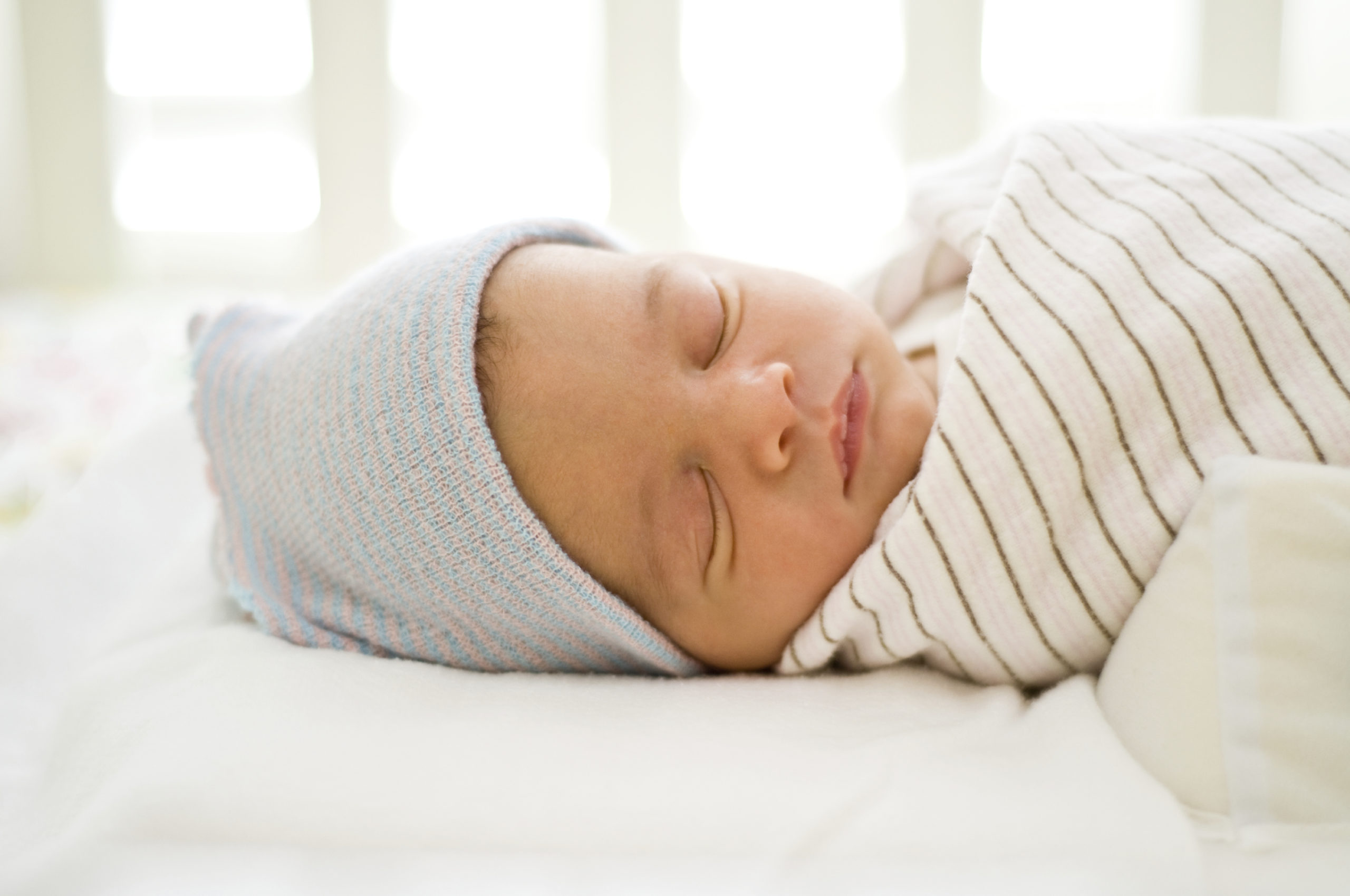A veteran nurse and the creator of the Woombie swaddle shares critical sleep advice for new parents
Recently sudden infant death syndrome has been in the media again as new studies offer insight into the potential causes. For those of you who don’t know, SIDS is defined as the sudden or unexpected death of an infant for no apparent reason. With so much information out there, it’s easy for parents to get confused and not know which guidelines to follow. As a mom of five, a 22-year nurse, and a Certified Infant Care Specialist, I have spoken with many parents and industry experts on the topic of SIDS.
My mission to help babies sleep safely started with my third child who experienced sleep issues as a preemie. Fueled by my inner mom determination and desperation to help our baby, I invented the Woombie, a now 20-award-winning baby swaddle. The Woombie helps to eliminate many risk factors associated with SIDS and we are deeply grateful to have helped over a million babies and counting.
Risk factors for SIDS
We still don’t know exactly what causes SIDS–that is, we don’t know why it is defined as unexpected. But we do know that there are various risk factors involved. Some are preventable and some are not. Even mom’s health can play an important role in baby’s chances of developing SIDS. Mothers who smoke, use drugs or alcohol, do not receive good prenatal care, or are younger than 20 are more likely to have a baby who dies of SIDS. Additionally, some babies are born with physical factors that can be associated with SIDS, such as having a low birth weight or a brain abnormality.
There is nothing parents can do to prevent these physical factors other than to seek good prenatal care. However, there are plenty of environmental factors that can cause SIDS. It’s crucial that we educate parents to recognize these risk factors and give them alternative solutions and actionable steps to help keep their baby safe.
Read more: What every parent-to-be needs to know now about co-sleeping
Sleep environment tips
- Sharing a room: As the new report from the American Academy of Pediatrics states, parents should be sharing the same room as baby for the first six months, but they should not sleep in the same bed. Co-sleeping can be dangerous for several reasons. Adult beds have pillows, blankets, and mattresses that pose suffocation risks, and there is also the risk of a parent accidentally rolling over onto the baby or the baby being rolled between the bed and the wall, etc.I know this is sometimes easier said than done, especially if you have a baby that is having trouble sleeping and you are exhausted, but parents should use other tools instead of giving in to co-sleeping. For example, using a safe baby swaddle to mimic the touch and security of being held by mom or dad is a great alternative.
- Back is Best: A baby should always be put on his or her back to sleep as opposed to stomach sleeping, which can create a risk for SIDS because baby may not be able to breathe face down or may be rebreathing his or her own exhaled breath. This is especially important in the early weeks or months of life when babies cannot lift and turn their heads.
- Overheating: Parents should not dress baby in multiple layers or over-swaddle their baby because it can lead to overheating, another known risk factor of SIDS. Baby must be dressed to maintain a comfortable body temperature while the nursery should be kept between 68-72 degrees Fahrenheit. Check baby’s back or neck and if it’s clammy to the touch, baby is too warm. Choose a swaddle that is breathable and ventilated to allow excess heat out.
- Empty crib: A baby’s crib should not have anything extra in it like pillows, toys, bumpers, or blankets because they can all pose a suffocation risk. If you want to use these items to decorate the nursery, that’s fine, just make sure to remove them before putting baby to sleep. A crib should only have a tight fitted sheet and a safely swaddled baby in it during sleep times.
- Swaddling: When choosing a swaddle for your infant, make sure you are following the proper size guidelines for the right fit. A swaddle that is too big can move up and cover baby’s face, while a too tight swaddle can cause hip problems and restrict breathing. Similarly, a traditional swaddle blanket can unravel and cover baby’s face posing a risk of suffocation. This is why zip-up swaddles are a top choice because they will not unravel or cover baby’s face, they reduce the risk of overheating if the fabric is breathable and ventilated, and they help keep baby sleeping on his or her back.
There is no way for any parent to guarantee their baby won’t develop SIDS, but we must do all that we can to try and prevent it. The best thing parents can do is continue to educate themselves and learn to create a safer sleep environment for baby. Lastly, let’s help spread awareness to new parents so they can take these steps to keep their little ones safe.



Sad to see SIDS still exists. Glad to see more & more SIDS info is being shared & more precautions are being taken to try to prevent SIDS from happening. And,very impressed with inventions that have been created to help prevent SIDS. I lost my firstborn son to SIDS. I wish I had known back then what I know now